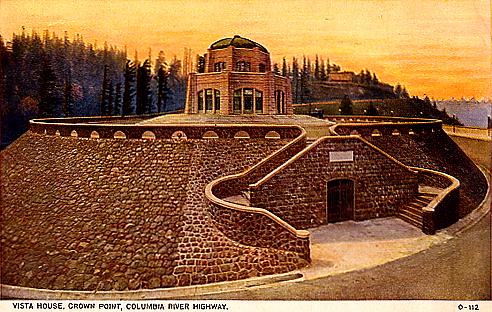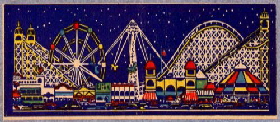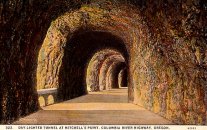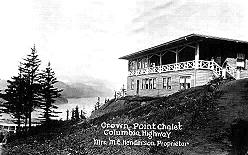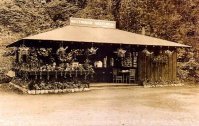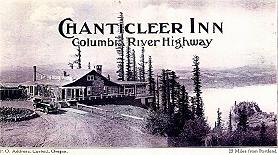 |
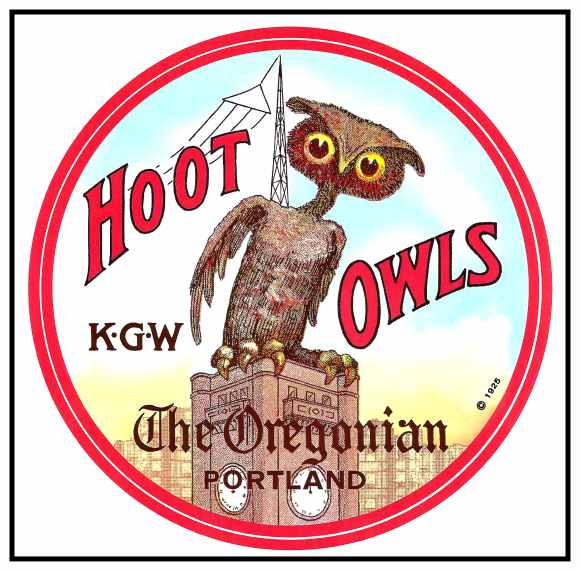 |
|||||||||||||||||||
|
|
||||||||||||||||||||
 |
||||||||||||||||||||
|
|
||||||||||||||||||||||||||||||||||||||||||
|
Mrs. Henderson’s Crown Point Chalet can be seen on the hill behind the Vista House |
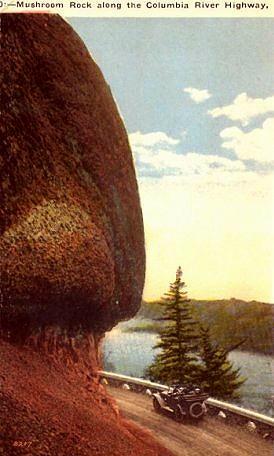 |
|||
 |
|||
|
In the days before freeways, the main route to the east from Portland was the Columbia River Scenic Highway, which starts in Troutdale and goes to The Dalles. The Historic Columbia River Highway was America’s first scenic highway and Oregon’s first paved thoroughfare. Construction of the highway, which is known for its ornate stonework, began in 1913. The lower section was dedicated on June 7, 1916 and the upper sections of the highway were finished in 1922. The one person most responsible for the Columbia River Highway was Sam Hill. Hill was born in 1857 in North Carolina and he lived for 74 years. He is most remembered for having built: the Columbia River Highway, the Peace Arch at Blaine, Washington and Maryhill Museum. Starting work at age 17 on a railroad survey crew, Hill quickly became a protégé of Pennsylvania Railroad magnate A.J. Cassatt. After earning a law degree from Harvard, Sam Hill settled in Minneapolis where railroad tycoon Jim Hill (no relation), organizer of the Great Northern Railroad, hired him as the company lawyer. Sam Hill took the hand of Jim Hill’s daughter, Mary Frances Hill, in marriage. Eventually, Sam Hill, who made a fortune in the railroad business, moved west to tend to his own enterprises: a gas company in Seattle and a phone company in Portland. |
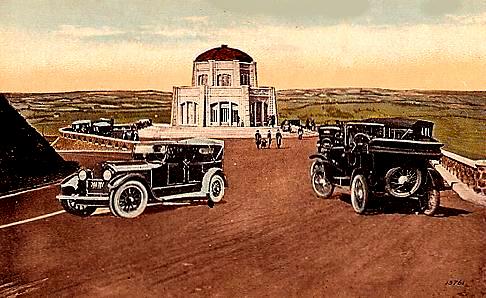 |
||||||||||||||||||||
|
Sam Hill loved the automobile and he realized it would be the next great mode of transportation. Automobiles needed good roads and Hill became an advocate of road construction and improvement. On a lobbying trip to Washington D.C., Hill met noted road engineer Samuel Lancaster. They teamed up to build one of the nation’s most scenic highways. They traveled to Europe and studied notable highways in Germany, Italy and Switzerland. After building Maryhill Museum, Hill wanted a paved road to make access to the museum easier. The State of Washington decided they had more important things to spend money on and Hill turned to Oregon. He persuaded Oregon to build the Columbia River Highway, which was hailed as a scenic wonder and engineering marvel. Hill corralled the money, provided his own engineer and brought the Columbia River Highway to reality. Lancaster’s talents were highlighted by his ability to design a highway that met the needs of safety and enhanced the region’s natural beauty, unlike modern day engineers who have little regard for beauty with their plain designs that seem out of place. Lancaster incorporated scenic jewels into his designs such as arched bridges, stone guardrails, windowed tunnels, beautiful waterfalls, dells, river gorges and snow-capped mountain views. |
||||||||||||||||||||
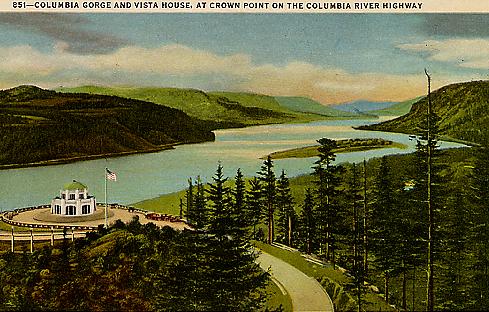 |
||||||||||||||||||||
|
One of the highlights of the trip is the Vista House at Crown Point, which was dubbed the “million dollar rest stop”, although records indicate it was closer to $100,000 |
||||||||||||||||||||
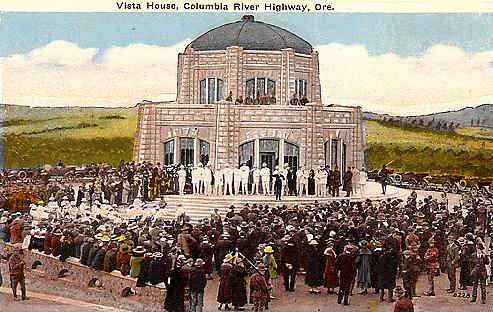 |
||||||||||||||||||||
|
The Vista House at Crown Point was dedicated on May 5, 1918. Dignitaries included Portland’s Royal Rosarians seen in their white attire. |
||||||||||||||||||||
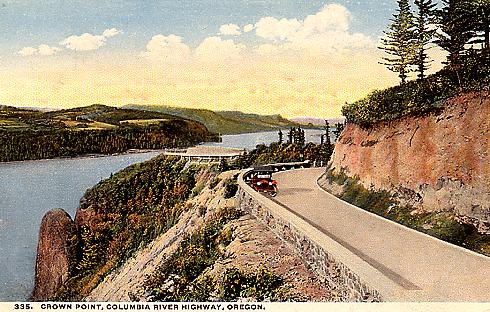 |
||||||||||||||||||||
|
This view shows Crown Point before the Vista House was built. This section of the paved highway had just opened in 1916. |
||||||||||||||||||||
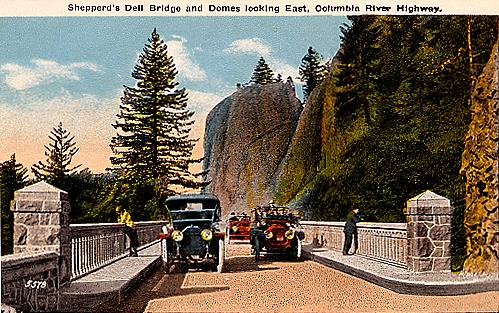 |
||||||||||||||||||||
|
Just around the bend from Crown Point was Shepperd’s Dell. It was located on a 10-acre plot that was given to the City of Portland by George Shepperd, a man of very modest means. |
||||||||||||||||||||
 |
||||||||||||||||||||
|
Another required stop is always Multnomah Falls, the second highest water fall in the U.S. at 611 feet. The lodge was built by the City of Portland on land belonging to lumber baron Simon Benson. Benson later donated the land to the City of Portland. The Union Pacific regularly stopped at Multnomah Falls Lodge when it was a train depot. The Cascadian-style Multnomah Falls Lodge was completed in July of 1925 at a cost of $40,000. The Lodge was designed by the famed architect A.E. Doyle, designer of the U.S. Bank Building, Reed College and Lipmans. Rolla Simmons, famous for Simmons Hillvilla, was the first concessionaire. In 1929, the canopy-covered patio was removed and the building was extended further to the east. Ownership of Multnomah Falls Lodge was passed to the Forest Service in 1939. Simmons continued to operate the food services at the Lodge until the Lodge closed in November 1942 during World War II. After the war, the Lodge was remodelled and it reopened in February 1946 under new management. Multnomah Falls remains one of Oregon’s most popular attractions and the Lodge recently celebrated 75 years. |
||||||||||||||||||||
|
Legend has it that an Indian maiden leapt to her death from the Upper Falls after a medicine man told her that her sacrifice would save her tribe from a fatal epidemic. Her spirit still protects visitors there today. There are people who can see her face in the rocks and cliffs. Just west of Multnomah Falls and Crown Point was the famous Chanticleer Inn. Over looking the Vista House was the Crown Point Chalet. |
||||||||||||||||||||
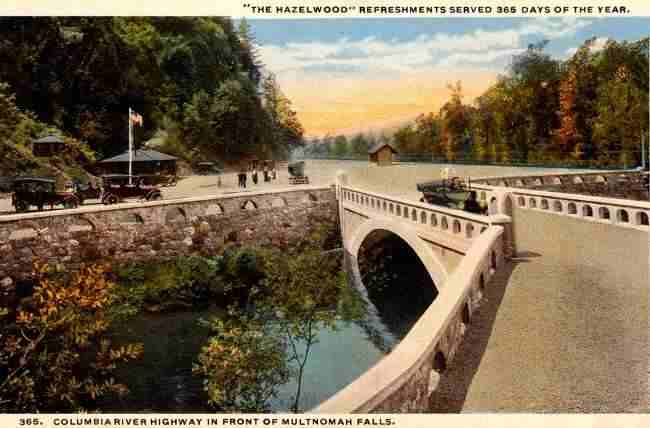 |
|
The Hazelwood was the first espresso stand at Multnomah Falls. It featured ice cream from the Hazelwood Cream Store at 3rd and Washington in downtown Portland. |
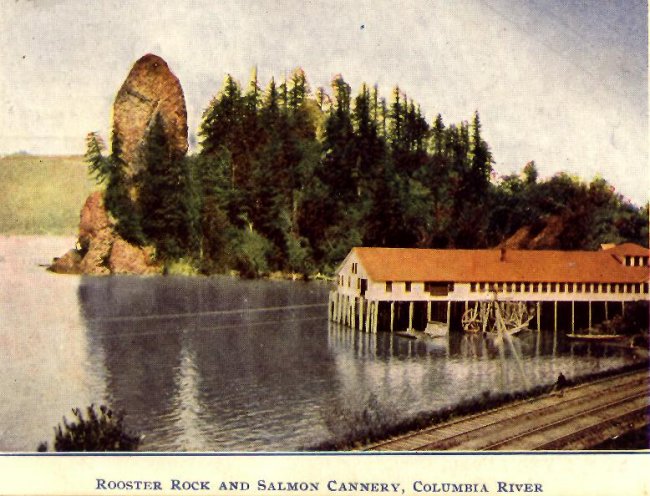 |
|
Chinese immigrants worked in the salmon cannery by Rooster Rock. Lewis and Clark spent the night at this spot on November 2, 1805 on their way to the Pacific Ocean. |
|
|
||||||||||||||||||||||||||||||||||||||||||||||||||||||||||||||||||||||||||||||||||||||||
|
Last updated 10-26-16 |
|
copyright © 2017 PdxHistory.com |



